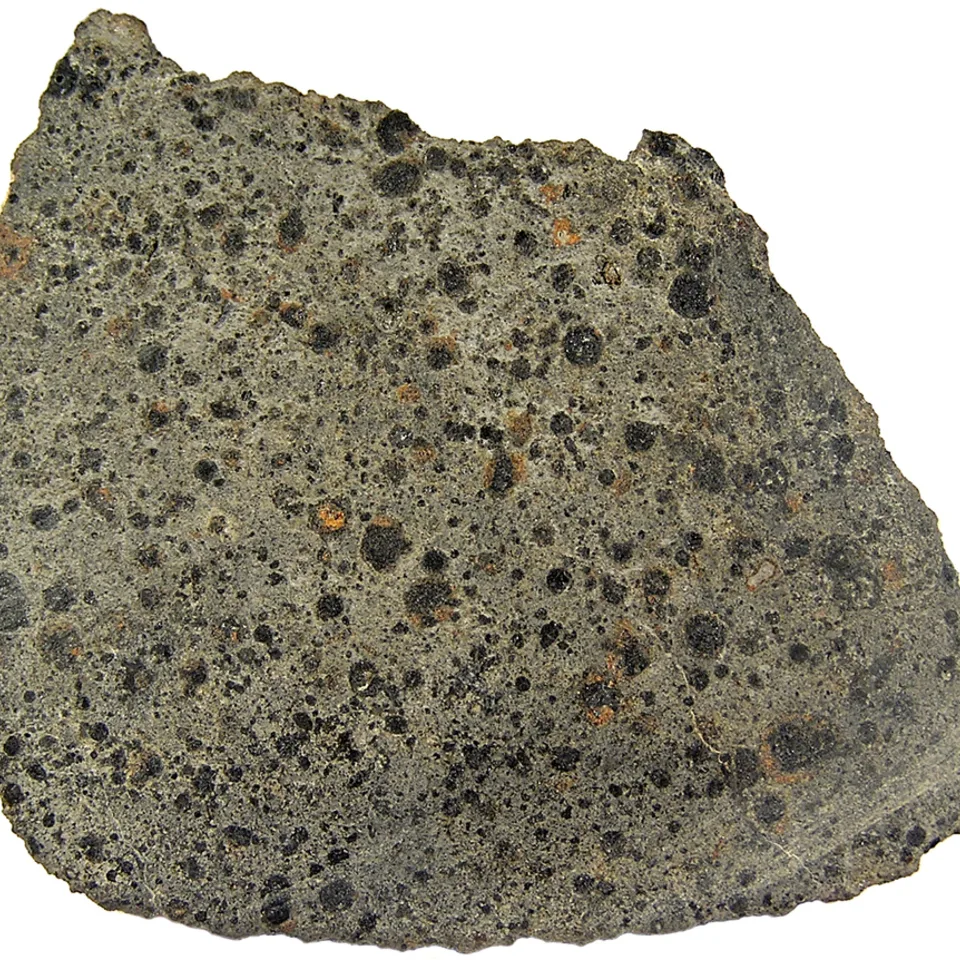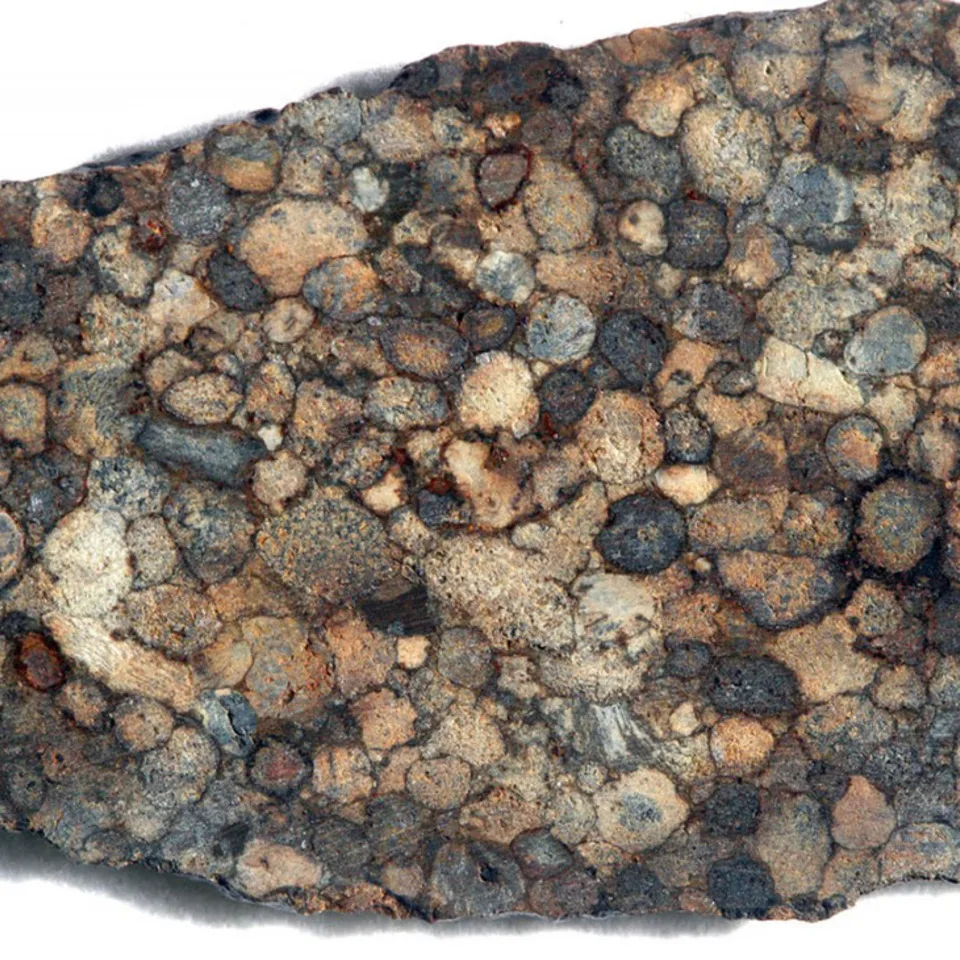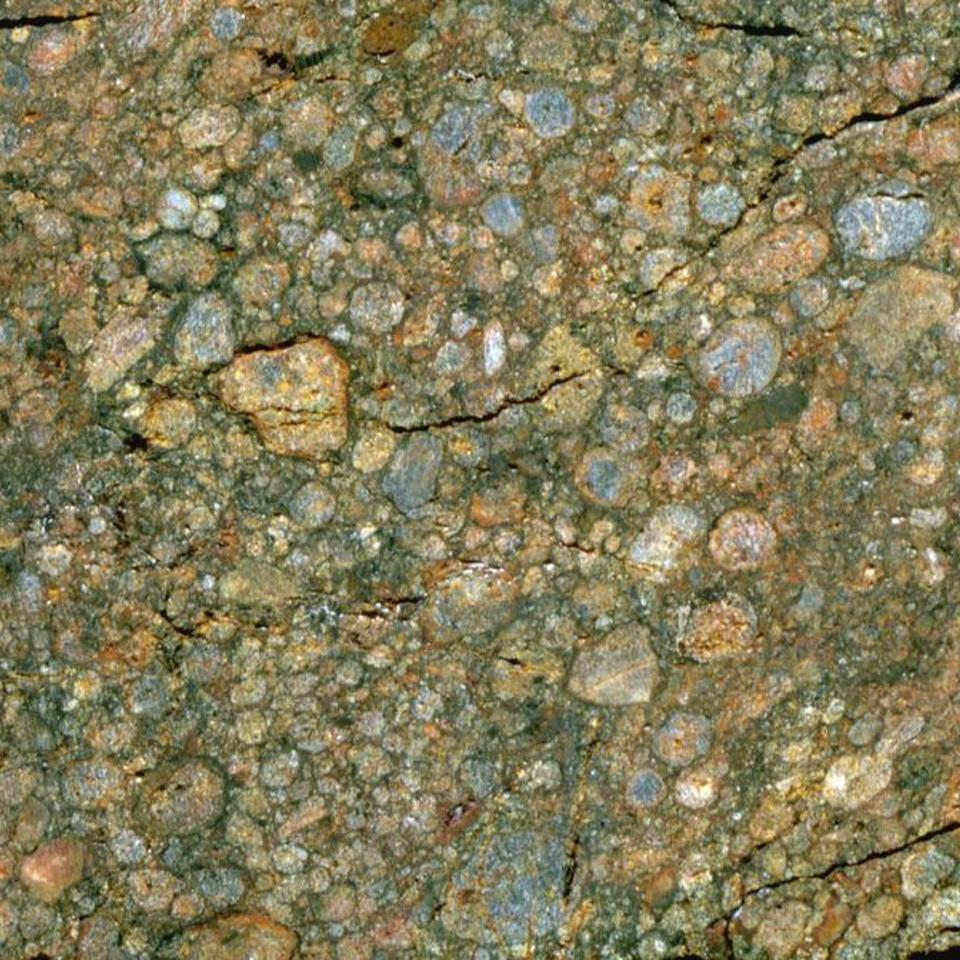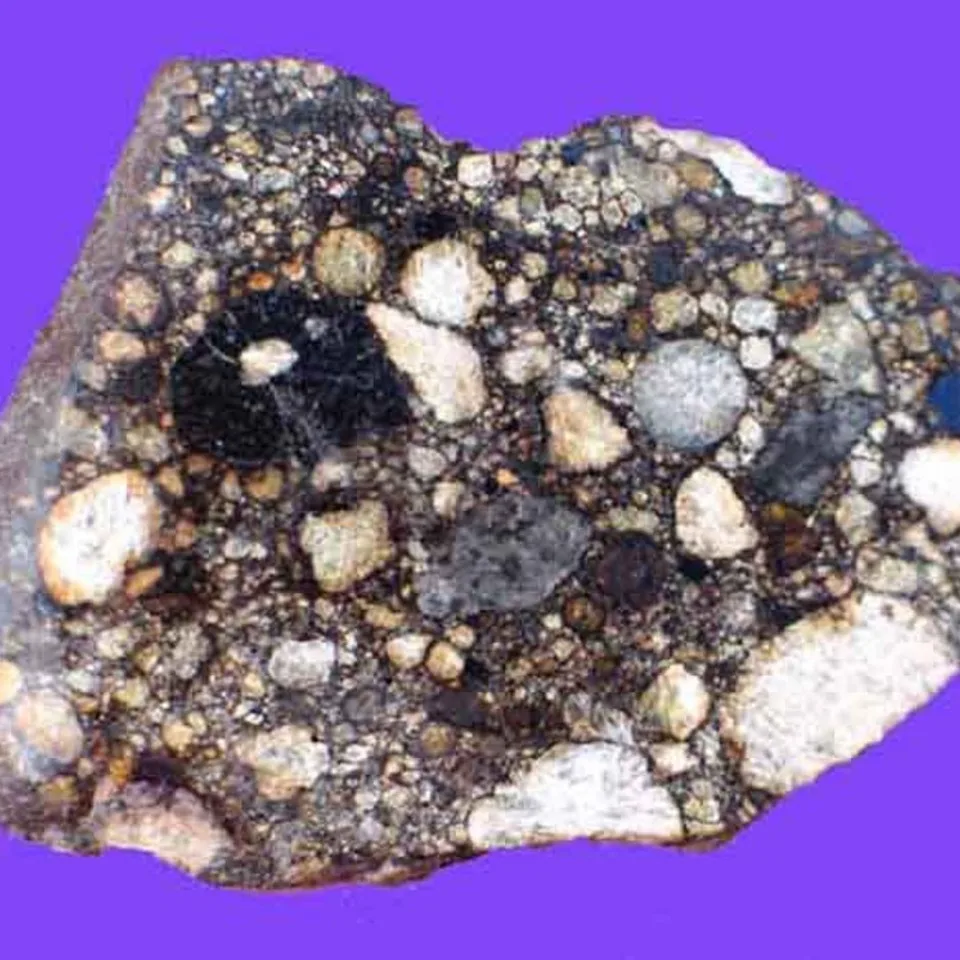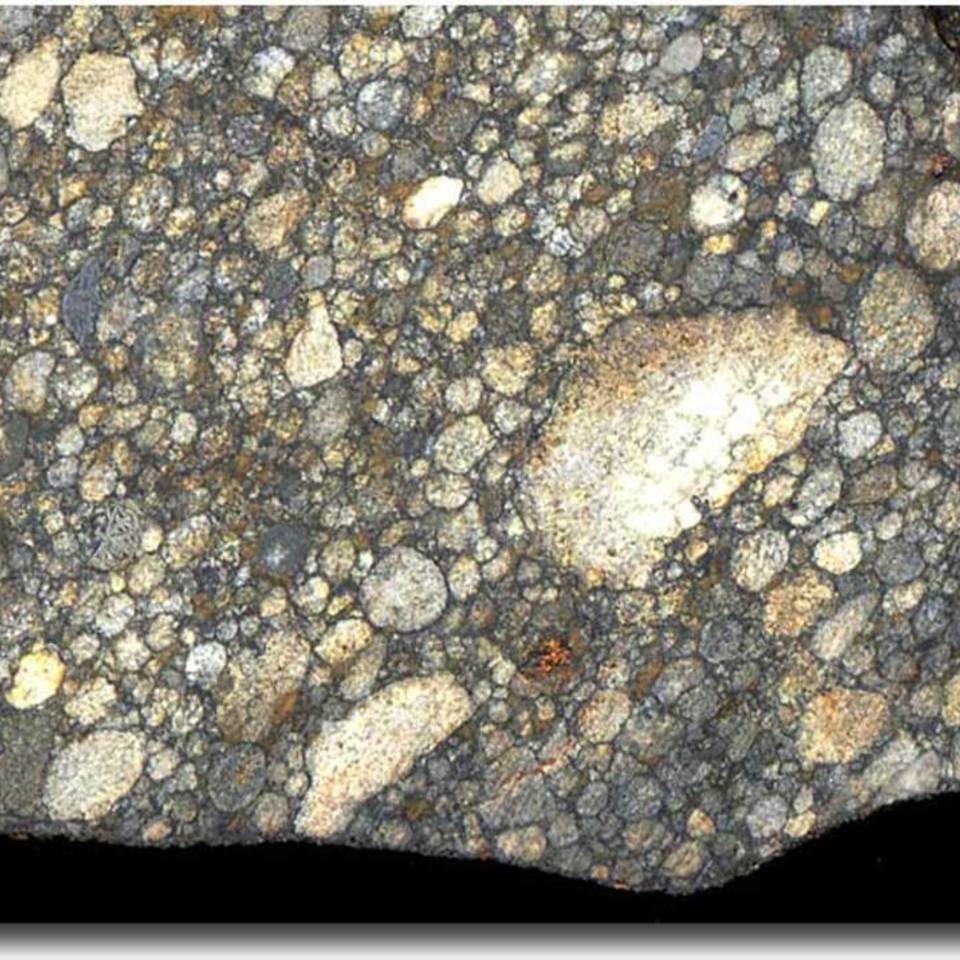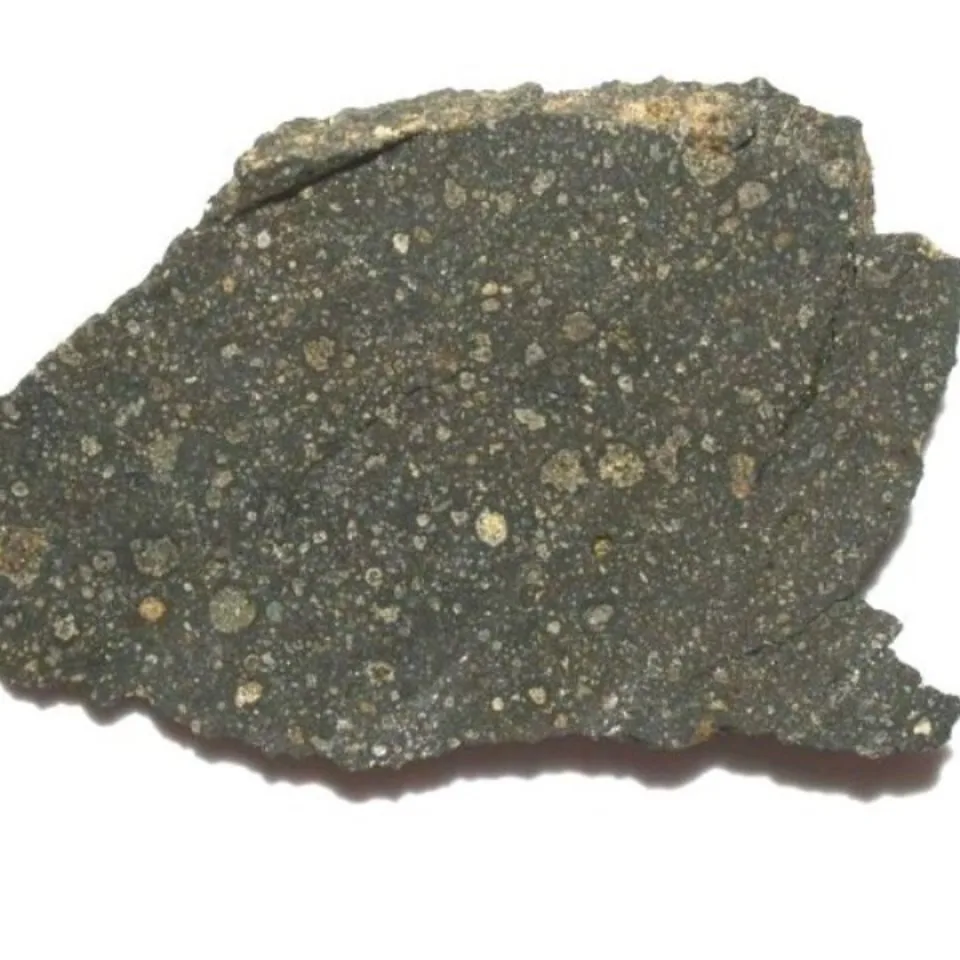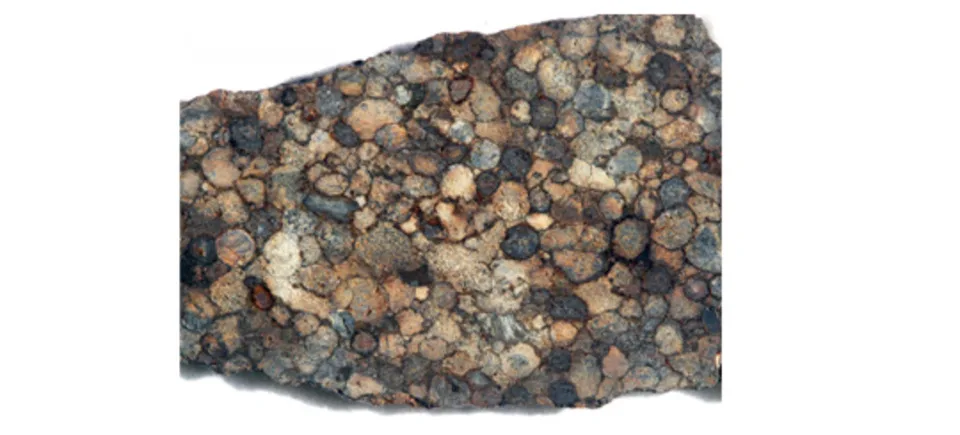Chondrites
Chondrites are some of the most primitive rocks in the solar system. These 4.5-billion-year-old meteorites have not changed much from the asteroid they came from. Because they have never really got hot, they have not melted. This means that they have a very distinctive appearance made from droplets of silicate minerals, mixed together with small grains of sulphides and iron-nickel metal.
This structure of millimetre-sized granules also gives chondrites their name, which comes from the Greek for sand grains ‘chondres’. Chondrites are the materials from which the solar system formed and have been little changed compared with rocks from the larger planets, which have been subjected to billions of years of geological activity. They are very similar in composition to the sun and can tell us a lot about how the solar system formed.
Stony Meteorites are characterized by chondrules–small spheres (average diameter of 1 mm) of formerly melted minerals that have come together with other mineral matter to form a solid rock. Chondrites are believed to be among the oldest rocks in the solar system. 82 percent of meteorite falls are chondrites.
